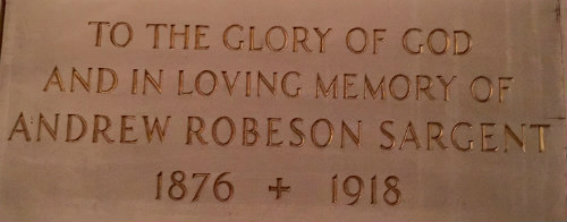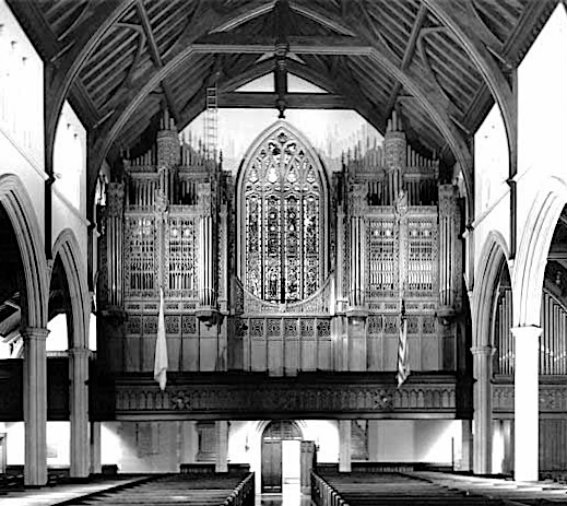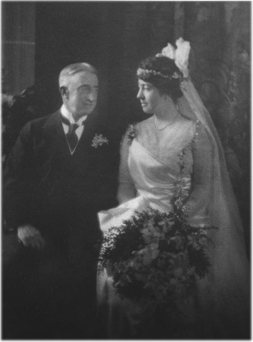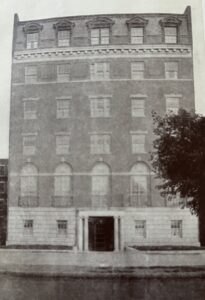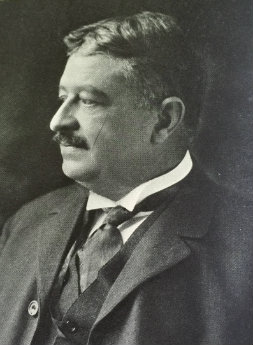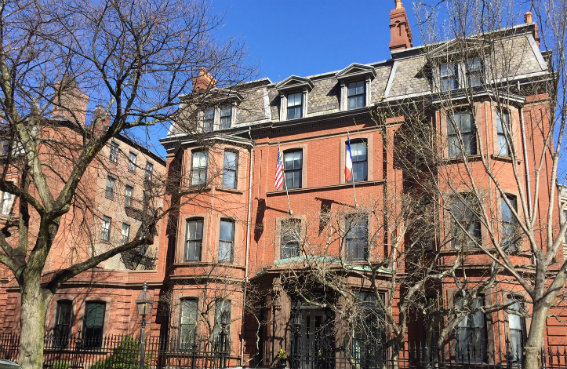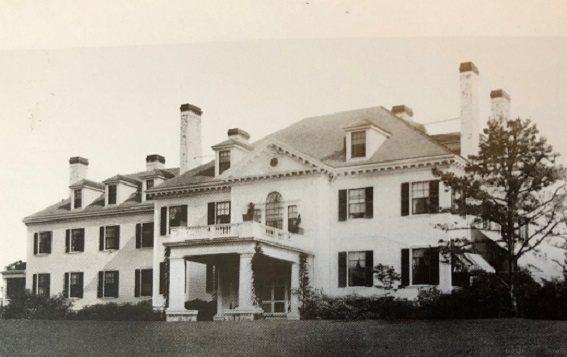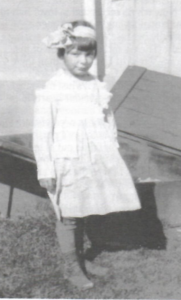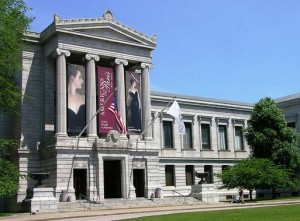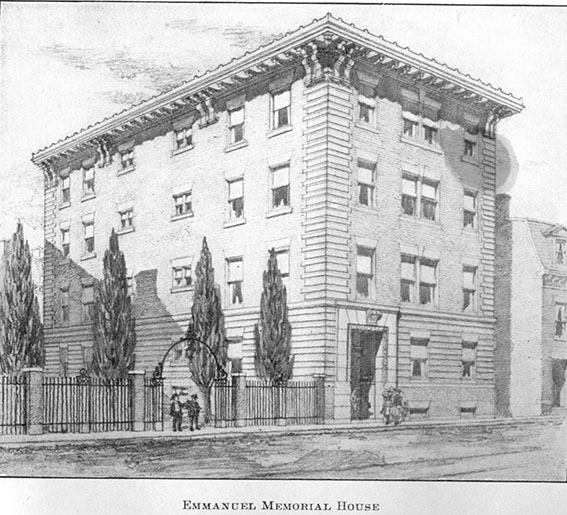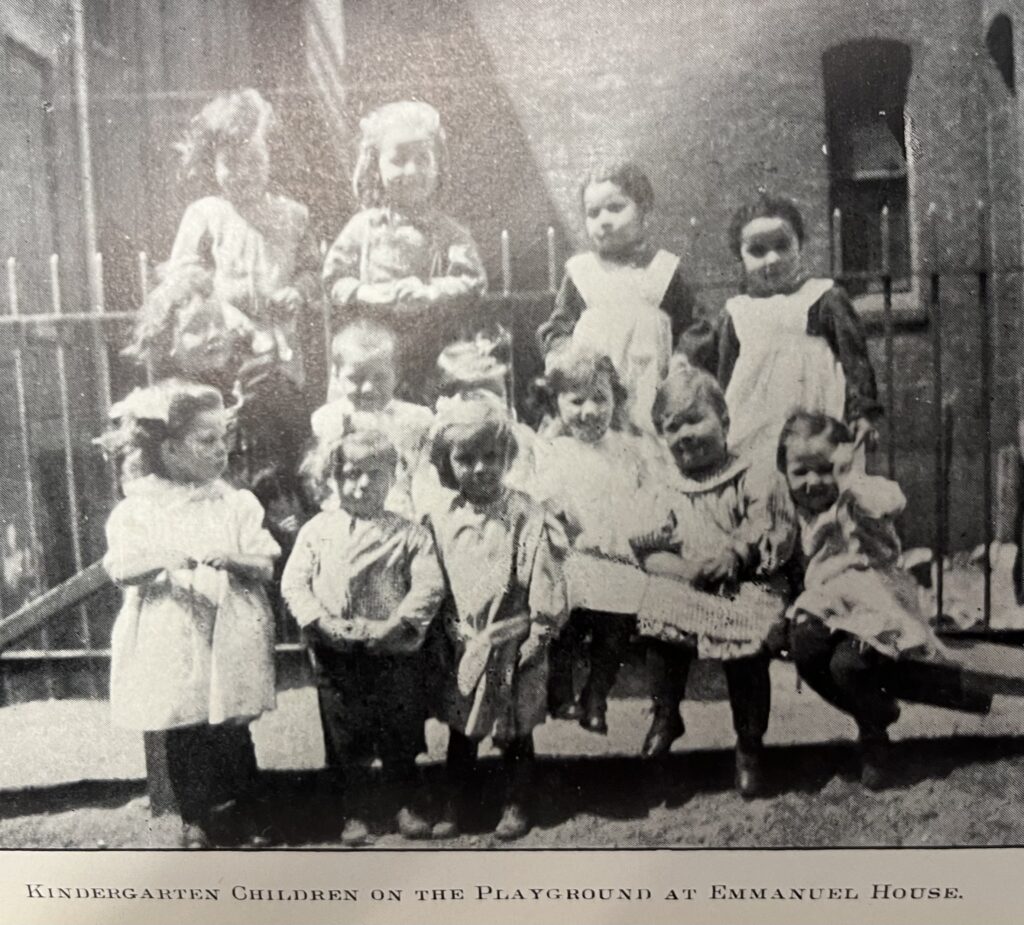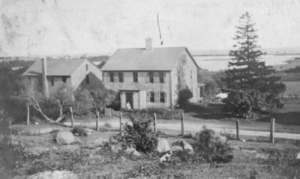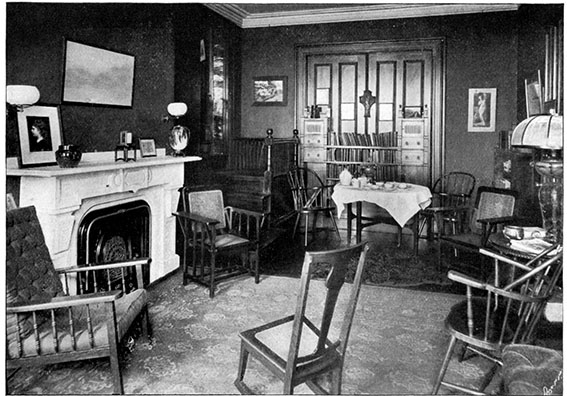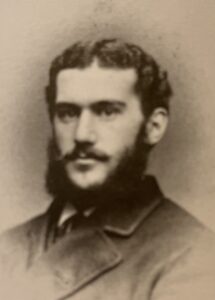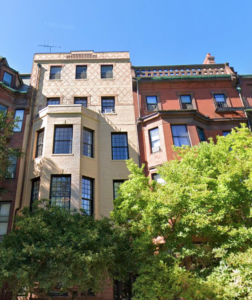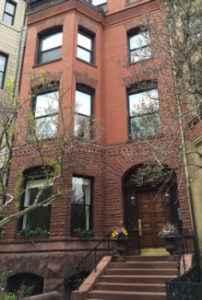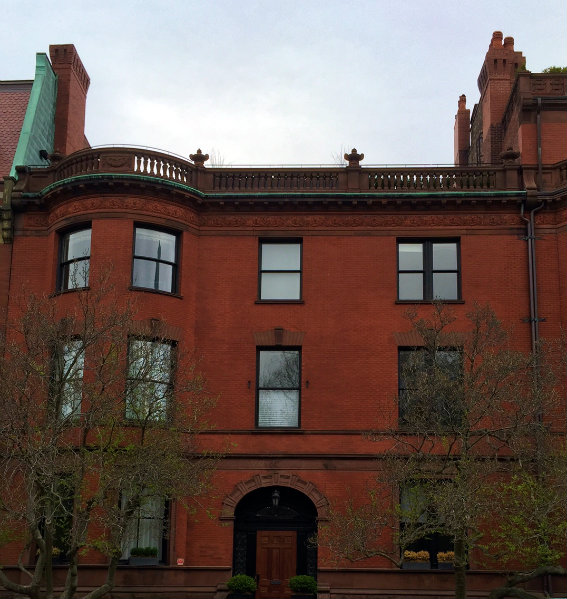Albert Williams Snow replaced Lynnwood Farnum as organist.
January 20. The Anthony Memorial Organ in the West Gallery was dedicated, honoring Silas Reed Anthony (1863-1914), who served as Parish Clerk (1887-1898), Vestryman (1898-1906), and Junior Warden (1906-1914). The organ was a gift of his widow, Harriet Weeks. who later became Mrs. Randolph Frothingham.
March 22. Bishop William Lawrence and Rector Elwood Worcester officiated at the funeral of Andrew Robeson Sargent, who at the age of 42 died in his sleep. After graduating from Harvard College in 1900, he had followed in his father Charles Sprague Sargent‘s footsteps and worked as a landscape architect with his brother-in-law Guy Lowell. His wife Maria de Acosta Sargent, daughter of the writer Mercedes de Acosta, had been painted by his third cousin John Singer Sargent. His mother Mary Robeson Sargent and sisters Henrietta, Molly, and Alice Sargent gave in his memory our hymn boards and the carved doors to leading from our sanctuary to the “Bride’s Lobby”.
See also:
- His letters to his father Charles Sprague Sargent in the archives of the Arnold Arboretum.
- “Andrew Robeson Sargent, Class of 1900.” The Harvard Graduates’ Magazine, 1918.
- “Andrew Robeson Sargent Dies.” The New York Times, March 21, 1918.
- “Many Friends Mourn Andrew R. Sargent.” The Boston Daily Globe, March 23, 1918.
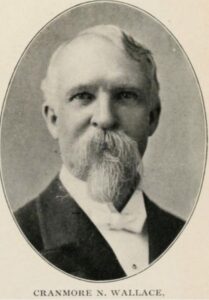 August 26. Col. Cranmore Nesmith Wallace, who had served on our vestry from 1896 until his death, died at the age of 74. His widow Eunice Sprague Wallace gave 2 lancets in our sanctuary (#18: Adoration of the Magi) in his memory
August 26. Col. Cranmore Nesmith Wallace, who had served on our vestry from 1896 until his death, died at the age of 74. His widow Eunice Sprague Wallace gave 2 lancets in our sanctuary (#18: Adoration of the Magi) in his memory
November 2. The Churchman (p. 518) reported that the Emmanuel Memorial House was serving as an emergency shelter for children made homeless by the influenza epidemic. Nurses and workers from the Children’s Aid Society and the (Episcopal) Church Home Society were supervising children housed in its “clubrooms” until they could be placed with families by “the usual placing-out services”.
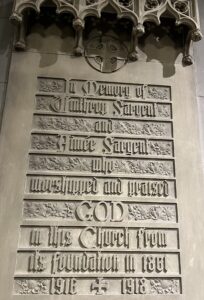 Aimee Rotch Sargent (born 1852) died. She had married at Emmanuel in 1874 Winthrop Henry Sargent (1840-1916). In 1893 she had given funds to create our sanctuary’s reredos in memory of her parents Annie & Benjamin S. Rotch and her siblings Arthur and Edith Rotch.
Aimee Rotch Sargent (born 1852) died. She had married at Emmanuel in 1874 Winthrop Henry Sargent (1840-1916). In 1893 she had given funds to create our sanctuary’s reredos in memory of her parents Annie & Benjamin S. Rotch and her siblings Arthur and Edith Rotch.


